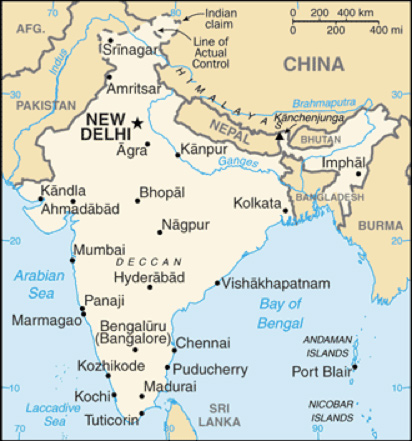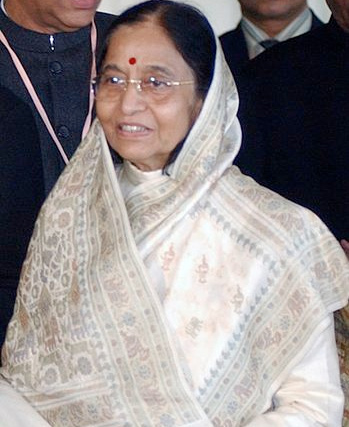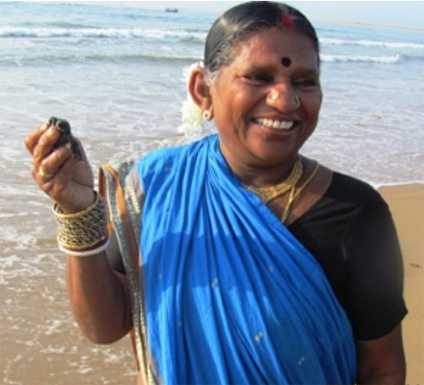
Source: India, Central Intelligence Agency

Source: India, Central Intelligence Agency
India is the second most populated country in the world (China is the most populated). There are more than 1.2 billion people who live in this South Asian country. The population of men outnumbers women in India (there is an estimated 940 females for every 1000 males). There have been many changes in the status of women in India, a federal republic, over time. In more modern times, women have held prominent positions in Indian government which has many ideals of democracy; women have served as political leaders, prime ministers, and presidents.
This is a photo of President Pratibha Devisingh Patil, the first female President of India, elected in 2007.

Source: Pratibha India, Wikipedia
India has a woman in the highest political position, but according to the MDG Monitor Map in Section 2, India only has 8.3% of their national parliamentarian government seats filled by women. Is India meeting the goals of MDG #3?
Although women have made great strides in government, their impact in education and the economy differs greatly. Females are educated far less than males. The evidence of this inequality in education is evident in the literacy rates of the country. The overall literacy rate is 61%, where the male literacy rate is 73.4% while the female rate is only 47.8%.
Women make up a large portion of the workforce. Most women in India work in the agricultural sector and many others work in services industries. Women, however, make far less than men who do the same work. This inequality in pay is very common in India; this results in more women, especially single mothers, living in poverty in India.
Read excerpts from a story provided by the United Nations Development Programme below about a program to address this disparity in the economy of India:

Source: Orissa's women lead the way to safeguard turtles and spur new income, United Nations Development Programme, India
WOMEN IN ORISSA'S FISHING COMMUNITY BENEFIT FROM THE CONSERVATION OF THE RARE OLIVE RIDLEY TURTLE. . . Samudram is a federation of 160 women's self-help groups that span 50 villages in six districts in Orissa, India. It aims to empower traditional Orissa fisherwomen in all facets of life. In recent years, Samudram has undertaken an initiative to economically empower 1,500 people from poor communities in Orissa by working to boost Orissa's fishing industry through the protection of Olive Ridley Turtle populations.
The endangered Olive Ridley Turtles are key predators of jellyfish, which eat fish larvae and deplete fish populations off the coast of Orissa. Protecting the turtles helps to keep jellyfish populations in check and, thus, preserves the supply of fish, which are a primary source of livelihood for Orissa residents.
. . . As a result, field studies have shown a 50 percent decrease in turtle mortality between 2005 and 2009. At the same time, Samudram reported that income levels for the approximately 400,000 women working in Orissa's fishing industry have nearly doubled, rising from about US$460 in 2004 to US$970 in 2010.
After reading the passage about Orissa's women and the economic program. Answer the following questions in your notes.
"Initiatives such as these that empower women and communities that are reliant on natural wealth to think globally and act locally must lie at the cornerstone of our poverty reduction efforts."
—Caitlin Wiesen, UNDP Country Director in India
Go to this Google Map link to explore the geography of India.